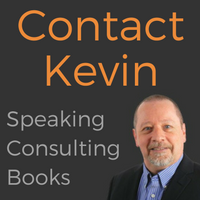If you want to cut expenses, don't slash the safety budget. Get rid of injuries and incidents. That's where the real expenses are.

There used to be a time when safety was considered an expense (if you’re still thinking this way, it may be time for you to retire). The days of “we don’t have to the budget to spend on safety” are quickly coming to an end. Safety is not an expense - it’s an investment. And simply put, the better you get at safety, the better your company will do financially.
Safety is not something you add to a workplace. It’s not an add-on that gets in the way of how you work. Safety should be the basis of everything you do in the job. Safety has to become the one of the prime guiding values of the organization. And the quicker that companies begin to understand this, the faster they will find themselves rising to the top in financial performance.
If you want to find ways to cut expenses and make (or should I say keep) more money, don’t slash the safety budget. If you want to cut expenses, get rid of injuries and incidents in the workplace. That where the real expenses are. That’s where your budget gets eaten alive. Stop letting your people get hurt. Run a clean safety record.
Here are four ways your company makes money by improving safety:
1Lower Insurance Premiums - One of my past clients paid eighteen million dollars per year in insurance premiums (over ten thousand employees). They admitted that if they could drop their incident rate by one and half points, they would save six million dollars annually in insurance premiums alone. How much money could you save annually by dropping your incident rate a point or two?
2Reduce Employee Turnover - The cost of turning over an employee is about 1.5 times the annual salary for a period of up to eighteen months to get full productivity to replace the last employee. But it’s not just injured employees that turn over, it’s also the employees who fear for their safety, who feel management doesn’t care about them and who will move on because they feel they are not valued as people. Dangerous workplaces don’t attract or keep good people.
3Eliminate Employee Fatigue - When an employee leaves the job, whether by injury or by choice, the remaining employees have to pick up the slack. There is an expectation to still get the job done regardless of whether there’s nine guys in a crew or 10. Employees must work harder to get the job done on time. That will wear out the remaining crew members faster. Employees with high fatigue factors make mistakes - mistakes that result in turnover, injury and increased insurance premiums.
4Maintain Your Brand - While other employees work in marketing, social media, service, sales and promotion departments, they are trying to build the brand of the company. A lot of money is at stake in building a brand. A year’s worth of painstaking marketing strategy execution can be washed away with a single workplace incident - especially if it makes headlines. Customers don’t want to touch poor safety performers with a ten-foot pole. People want to do business with companies with excellent safety records and a strong brand. Safety protects your brand.
There are many more ways that safety helps build a better bottom-line. These are just four.
Employees won’t act safe if they don’t feel safe. So the strategy is to build a safe and caring workplace where employees feel safe and secure. You will get far better productivity from employees when they are engaged and motivated to give their best.
Make your investment in safety. Happy and healthy employees are your best ambassadors anyway. They will bring you more good employees doing good work. Get out of the mindset of safety being nothing more than a legal requirement and a black hole of money. Honestly, an employee that feels cared about is more likely to give you a full and honest day’s work that is done with pride and with care.
And if you want to show your people that they are important, consider a day to celebrate their achievements in safety. Feed their stomachs, nourish their brains and inspire their motivation for safety. I’d be pleased to be a part of that day.



